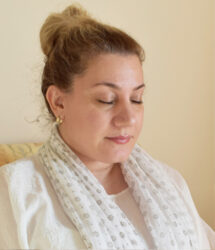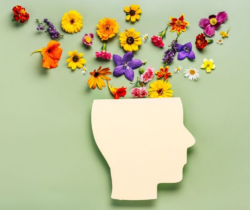Rediscovering Girlhood’s Lost Vision

Girlhood is a new nonfiction book by Melissa Febos, an author and professor. In her book, she mourns the innate sense of infinite possibility we experience when we are very young—before the world’s traditions and opinions narrow our definition of ourselves and our expectations for the future.
Ms. Febos writes:
“I sensed a deep well at my center, a kind of umbilical cord that linked me to a roiling infinity of knowledge and pathos that underlay the trivia of our daily lives. Its channel was not always open, and what opened it was not always predictable: often songs and poems, a shaft of late-afternoon light, an unexpected pool of memory . . . I would read or think or feel myself into a brimming state—not joy or sorrow, but some apex of their intersection, the raw matter from which each was made….
If women can grow attached to a vision of their younger selves as uncommonly pure, creative, and powerful, perhaps it’s because such insistence helps us to process the wrongness of what happened next—the ways in which women are programmed to collaborate in their own diminishment….
We learn to adopt a story about ourselves—what our value is, what beauty is, what is harmful and what is normal. This training of our minds can lead to the exile of many parts of the self.”
Losing such pure inner vision and our sense of infinite potential is a loss to life. When we don’t have the primacy of our transcendent identity, we become prey to the boundaries of stereotyping and contemporary social mores. The “story about ourselves” was shaped by those who were society’s role models as well as educators, parents, books we read, shows we watched, guidelines we were given, and by innocent observation of the way things work. We became what we saw.
The “way things are” is what we assume is normal—we are expected to fit in and we strive to conform to that norm. As we grow and are molded, we receive feedback and coaching in an endless loop of assessment, correction, and new direction. We either begin to inhabit the new identities we assume, or we learn to act the parts—which can, by the way, be stressful. Dissonance between your inner identity and the persona you project is uncomfortable.
As adults, having the psychological freedom to be fully authentic and spontaneous requires revisiting the “deep well” at our center. It requires continual repeatable access to “the raw matter” that Ms Febos describes. In her girlhood, the events that triggered or evoked the transcendent experience were varied and unpredictable. And then the experience was lost to her as she got older.
But it doesn’t have to be that way. Our mind can transcend outer habitual boundaries of perception in a simple, repeatable, effortless way. That is precisely what the Transcendental Meditation technique succeeds in doing.
The name Transcendental Meditation expresses both its mechanics and its purpose: To transcend means to go beyond. Meditation means thinking. Going beyond during meditation means to go beyond the usual activity that fills our minds to an experience of softer, more subtle levels of thinking, and even to go beyond the thinking process itself. Does that mean we become unconscious or fall asleep? Actually, it means we fall awake—awake to our inner nature—simple, innocent, direct perception of the silent, undivided, unsullied, pure, settled state of our Self.
The events and individuals who influenced us in our lives had a significant role in creating how we see ourselves now. We bought “the story”—however alluring or repressive it may have been—and it affected how we are defined and redefined over time. But liberation is available—the greatest depth and scope of ourselves can be revived and lived if we only will take the simple step of learning how to transcend again.
Learn the Transcendental Meditation Technique. Contact a TM teacher today.
About the Author
Janet Hoffman is the executive director of TM for Women Professionals, a division of TM for Women in the USA





